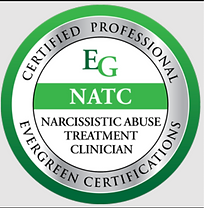

Soteldo Psychotherapy
Narcissistic Abuse Recovery Clinic
Certified Narcissistic Abuse Treatment Clinician

(343) 312-5283
Bipolar II Depression
SNOMED Terms
-
Adjustment disorder with depressed mood
-
Adjustment disorder with disturbance of conduct
-
Adjustment disorder with mixed anxiety and depressed mood
Goals
-
Begin a healthy grieving process around the loss.
-
Develop an awareness of how the avoidance of grieving has affected life and begin the healing process.
-
Complete the process of letting go of the lost significant other.
-
Resolve the loss and begin renewing old relationships and initiating new contacts with others.
Behavioral Definitions
-
Thoughts dominated by loss coupled with poor concentration, tearful spells, and confusion about the future.
-
Serial losses in life (i.e., deaths, divorces, jobs) that led to depression and discouragement.
-
Strong emotional response exhibited when losses are discussed.
-
Lack of appetite, weight loss, and/or insomnia as well as other depression signs that occurred since the loss.
-
Feelings of guilt that not enough was done for the lost significant other, or an unreasonable belief of having contributed to the death of the significant other.
-
Avoidance of talking on anything more than a superficial level about the loss.
-
Loss of a positive support network due to a geographic move.
Diagnoses
-
Major Depressive Disorder, Single Episode
-
Major Depressive Disorder, Recurrent
-
Bereavement
-
Adjustment Disorder With Depressed Mood
-
Adjustment Disorder With Disturbance of Conduct
-
Dysthymic Disorder
What is Bipolar II Depression?
Bipolar 2 disorder is a type of mood disorder that is similar to bipolar 1 disorder but with less severe manic episodes, also known as hypomanic episodes. In bipolar 2 disorder, a person experiences episodes of depression and hypomania, which is a less severe form of mania. During a hypomanic episode, an individual may feel very energetic, talkative, and have an elevated mood, but is still able to function normally in their daily life.
Bipolar 2 disorder can be challenging to diagnose as individuals with the condition may initially seek treatment for depression, which is a common symptom of the disorder. Treatment for bipolar 2 disorder typically involves a combination of medication and psychotherapy, with the goal of managing symptoms and preventing future episodes.
Symptoms of Bipolar II Depression
The symptoms of bipolar 2 disorder can vary from person to person, but generally involve cycles of hypomania and depression. Here are some common symptoms of each:
Hypomania:
- Increased energy, activity, and restlessness
- Euphoric or irritable mood
- Racing thoughts or rapid speech
- Decreased need for sleep
- Increased self-confidence or grandiosity
- Increased risk-taking behavior
- Impulsivity or poor judgment
Depression:
- Persistent feelings of sadness, hopelessness, or emptiness
- Loss of interest or pleasure in activities once enjoyed
- Significant weight gain or loss, or changes in appetite
- Insomnia or hypersomnia (sleeping too much)
- Fatigue or loss of energy
- Feelings of worthlessness or guilt
- Difficulty concentrating or making decisions
- Thoughts of death or suicide
People with bipolar 2 disorder may experience more depressive episodes than hypomanic episodes, and their symptoms may be severe enough to interfere with daily life. It's important to seek help from a mental health professional if you or someone you know is experiencing these symptoms.
How does Bipolar II Depression affect your life?
Here are some of the challenges people with Bipolar II depression experience:
Depressive episodes: These episodes can cause feelings of hopelessness, worthlessness, and a loss of interest in activities that were once enjoyable. They can make it difficult to concentrate, sleep, and function at work or school.
Hypomanic episodes: While not as severe as manic episodes in Bipolar I, hypomania can still disrupt a person's life. During these episodes, someone might be more irritable, talkative, or take risks they wouldn't normally take.
Unstable relationships: The mood swings associated with Bipolar II can make it difficult to maintain healthy relationships with friends, family, and romantic partners.
Substance abuse: People with Bipolar II sometimes use drugs or alcohol to self-medicate their symptoms.
If you think you or someone you know might have Bipolar II depression, it's important to seek professional help. A doctor or therapist can diagnose the condition and develop a treatment plan.